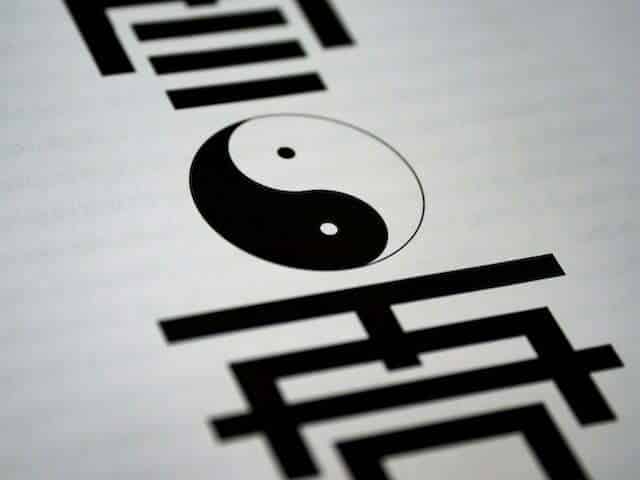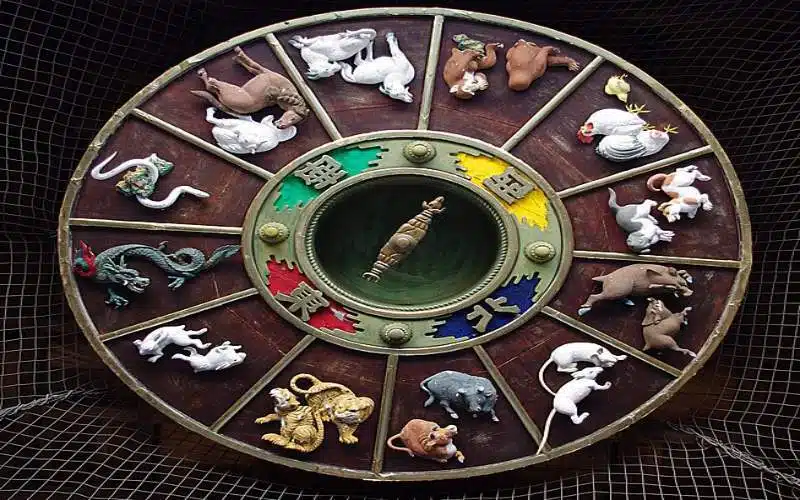Chinese astrology is a vital part of Chinese philosophy, and it has existed for almost 3,000 years. It mixes both astrology and calendars, as well as Taoism principles, and it flourished under the Han dynasty. However, even in the modern age, Chinese astrology is used by those who want to learn more about themselves and the world around them.
The Basics of Chinese Astrology
Like Western Astrology, Chinese Astrology uses twelve different signs or symbols to define twelve basic categories of a human being. Each of the Chinese Animal Signs speaks from our hearts about the world around us and how we fit into the grand scheme of life.
“This is the animal you hide inside of your heart.” — an old Chinese proverb
Birth dates
Similarly to western astrology, the Chinese system uses a person or an event’s birth date as the basis for his / her / its sign. However, while the Western system uses a 12-month cycle to go through the signs, the Chinese system relies on a 12-year cycle.
The Chinese Calendar
Chinese astrology is based on the Chinese calendar, particularly the 12-year cycle of animals (aka Chinese Zodiac). Its fortune-telling aspects are related to the movement of heavenly bodies across the Chinese constellations in the sky.

Chinese zodiac signs run within a (Chinese calendar) year-based system. Each Chinese sign has a different animal name corresponding to one Chinese calendar year. These animals include:
- Rat – The first zodiac sign, a symbol of good luck, fertility, intelligence, and change.
- Ox – A symbol of friendship, diligence, honesty, and strength.
- Tiger – Symbolizes courage, empathy, stubbornness, strength, and leadership.
- Rabbit – Represents beauty, mercy, elegance, peace, and arts.
- Dragon – The only mythical zodiac sign, the dragon symbolizes strength, good luck, and health.
- Snake – Wisdom, intelligence, longevity, and good fortune.
- Horse – A symbol of freedom, beauty, strength, power, and elegance.
- Goat – Creativity, Intelligence, mild manners, gentle nature, and peace.
- Monkey – Represents honesty, intelligence, independence, and positive thinking.
- Rooster – Symbolizes punctuality, fidelity, honesty, ambition, and good communication skills.
- Dog – A symbol of loyalty, friendship, honesty, and good luck.
- Pig – Wealth, good luck, honesty, prosperity, diligence, patience, and peace.
Planetary Positions
What determines the destiny of a person’s life according to Chinese astrology?
The position of the five planets, the sun, the moon, and comets in the sky and the Chinese zodiac sign when a person was born.
Modern Chinese astrology still continue to employ a time-consuming method of calculating a person’s fate and destiny based on their birthdate and birth time. The twenty-eight Chinese constellations (xìu) are quite different from the eighty-eight Western constellations.
For example, the big dipper (Ursa Major) is known as dou; the belt of Orion is known as shen, or the “Happiness, Fortune, Longevity” trio of demigods. The seven northern constellations are referred to as xúanwu. In Taoism, Xuan Wu is also referred to as the spirit of the northern sky or the spirit of water.
5 Elements
The ancient Chinese astronomers named the five major planets according to the names of the Five Chinese Elements. They are as follows:
Venus: Metal
Jupiter: Wood
Mercury: Water
Mars: Fire
Saturn: Earth
Chinese Mythology
In addition to astrological readings of the heavenly bodies, the stars in the sky serve as the foundation for many fairy tales. For example, the Summer Triangle consists of the cowherd (Altair), the spinster maid fairy (Vega), and the “tai bai” fairy (Deneb).
The silvery river (the Milky Way) divided the “Two Forbidden Lovers.” Every year on the seventh day of the seventh month in the Chinese calendar, the birds construct a bridge across the Milky Way.
The cowherd then brings their two boys (the two stars on either side of Altair) across the bridge to reunite with their fairy mother. The tai bai fairy works as a chaperone for these two immortal lovers.
Yin and Yang Aspect of Chinese Astrology
Since the beginning of human civilization and the first cave art, people have used visual symbols to represent ideas and exchange them with the rest of their community. As our society developed, those symbols developed too, but some of those symbols remained relevant even after two or three millennia.

Sometimes, we are surrounded by those symbols without even realizing it. They become embedded in our daily lives, culture, art, and some even become popular tattoo choices.
Such is the case with the Yin-Yang symbol. Unless you’ve been living under the rock, you probably have seen it. Basically, it looks like a circle, half black and half white. The black half has a small white dot, while the white half has a small black dot.
As such, Yin Yang represents the balancing forces of the universe. This universal yin/yang symbol illustrates the old Chinese perception of how things work.
The Interaction of Two Energies
The outer circle of the Yin and Yang symbols symbolizes “everything,” whereas the black and white forms inside the circle symbolize the interaction between two energies known as “yin” (black) and “yang” (white), which cause everything to happen. They are not completely black or white, just as things in life are not entirely black or white, and they cannot exist without each other.
Yin and Yang – The Alpha and Omega of The Cosmos
The yin and yang represent all the balancing forces in the universe. It is the alpha and omega of the cosmos as well as the genesis and the apogee of all things. Under yang are the absolute principles of creation and the forces that bring growth and evolution. Under yin however, are the opposing principles of counteracting forces that bring about death and anti-evolution.
The Cyclical Nature of Yin and Yang
The opposing forces of change in the universe, yin and yang, are cyclical and have multiple meanings.
- Firstly, a cycle of reversal – The first meaning is that all phenomena change into their opposites in an eternal cycle of reversal.
- Second, the opposite states – Because one principle leads to the other, all phenomena include the seeds of their opposing state, i.e., poverty contains the seeds of prosperity, sickness contains the seeds of health, etc.
- Third, the presence in absence: Since one principle causes the other, no phenomenon is entirely devoid of its polar opposite state, even while the opposite may not appear to be there. Since health includes the principle of its antithesis, sickness, one can never be truly healthy. This is called “presence in absence.”
You need to understand this principle, the particular Chinese philosophy of equal and opposite forces in nature. Only then the meaning of yin and yang becomes clear and helps to explain the nature of our universe and ourselves.
Cosmic Opposites – Heaven and Earth
Each of these opposites produces the other: Heaven creates the ideas of things under yang, the earth produces its material forms under yin, and vice versa; the yin principle governs completeness of the created thing, the yang principle governs the creation, and so on.
This production of yin from yang and yang from yin occurs cyclically and constantly so that no principle continually dominates the other or determines the other. All opposites that one experiences, health, and sickness, wealth and poverty, power and submission, can be explained by the temporary dominance of one principle over the other.
No principle ever dominates for all eternity; hence all conditions can shift into their opposites.
Origin of Yin-Yang
The dual concepts of yin and yang – or the single concept of Yin-Yang – originate in ancient Chinese philosophy and metaphysics. They describe two primal opposing but complementary principles or cosmic forces. Moreover, it is believed that such principles are to be found in all non-static objects and processes in the universe.
Taoism and conventional Chinese medicine are founded on this concept.
Yin
Yin (Chinese: 陰 or 阴; Hanyu Pinyin: yīn; literally “shady place, cloudy/overcast, north hill slope, south river bank”) is the dark element; it is night-related, dark, passive, feminine, and downward-seeking.
Yang
Yang (陽 or 阳; yáng; “sunny place/sunshine, south hill slope, north river bank”) is the bright element; it belongs to the day and is active, light, masculine, upward-looking, and active.
Water and earth are frequently used to represent yin, while fire and wind are used to represent yang.
Complementary Opposites
Rather than being absolutes, yin and yang are descriptions of complementary opposites. Yin is the receptive, feminine, dark, and passive power. Yang however is the creative, masculine, bright, and active force. Every yin/yang dichotomy can be seen from a different angle. The yin and yang states of all energies in nature can be viewed as being in motion as opposed to being held in complete stillness.
How Does the Yin-Yang Principle Affect The Chinese Zodiac Signs?
Just like everything else in the universe, Chinese Zodiac signs have yin and yang identities. These identities then determine the compatibility between signs, as the old proverb says: “The opposites attract each other.”
Yin Zodiac Signs
- Rooster
- Rabbit
- Pig
- Snake
- Ox
- Goat
Yang Zodiac Signs
- Monkey
- Tiger
- Rat
- Horse
- Dragon
- Dog
Yin-Yang and Number of Toes
One legend tells us a story about how a number of toes played a role in assigning 12 zodiac animal signs to either the Yin or Yang principle. In Chinese mythology, time is divided into 10 Heavenly Branches and 12 Earth Branches.
Those zodiac animals that had an odd number of toes on their legs were assigned as having a Yang quality, and they were placed in the odd-numbered sequence. However, animals that had an even number of toes on their legs (or no toes and no legs) were placed in the even-numbered sequence and assigned as having a Yin quality.
However, the Rat couldn’t be so easily placed in either of the two groups because rats have four toes in their front legs and five toes in their hind legs. That’s why the Rat earned first place in the zodiac, and as the beginning of the new zodiac cycle, he symbolizes the change between Yin to Yang.
The Beauty Of Chinese Astrology
Chinese astrology is one of the most beautiful expressions of spiritual identity that we have been given. Through metaphors and imagery, the longing of the soul to become one with the infinite is clearly expressed.
Chinese astrology, in contrast to western astrology, explores the metaphysical aspects of life through a surrealist story. The needs of the spirit are seen through the eyes of a child.
Life and Astrology
Chinese astrology, like Western astrology, is only one of the paths to divine knowledge. Other avenues toward ultimate truth are all around us. The song of a bird, the sound of the sea, or the cry of a newborn child have all whispered hints of the natural order of things.
When one bird dies, another will take up its song. If the sea were to dry up, the wind would take its place. And, when an old man dies, a baby will be born to continue the journey of mankind. This gift of life that we have been given is a sacred trust, and the manner in which we choose to live it will really tell us who we are.
Featured Image Credit: Jakub Hałun, CC BY-SA 4.0, via Wikimedia Commons

